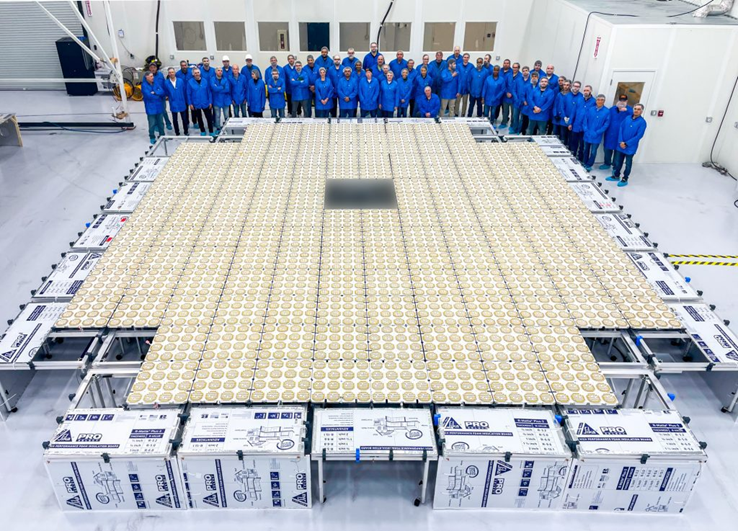SpaceX vs AST SpaceMobile
July 12, 2024

During Q4, AST SpaceMobile is due to launch five of its massive ‘Block 1 BlueBird’ 5G-ready satellites into orbit. These satellites will deliver 5G signals. In Q1 2025, AST has stated it will start launching its Block 2 BlueBird versions, which it says will be “ten times more powerful” and downloading at least 14 Mb/s to ordinary smartphones around the world. However, rival SpaceX is rapidly populating its fleet with its own Direct-to-Cellular (DTC) satellites.
At 02.35 UTC on July 12th, SpaceX launched another batch of its DTC craft. It had already carried out four specific launches of DTC satellites in June, and another on July 3rd. It takes the number of DTC satellites in orbit to 116. Experts suggest that given current production/launch rates, SpaceX will take just 115 days to reach its projected ~300 payloads for initial continuous coverage or about October 30th to complete its basic global fleet.
The question now is: Which of these two will actually start services to users in out-of-reach regions or cellular ‘not-spots’?
AST has already stated it will provide a limited, although non-continuous, service in targeted geographical areas in 2025, “including in the US and seek to generate revenue from such service”. AST has two heavyweight US terrestrial partners in the shape of AT&T and Verizon. SpaceX has the USA’s third national cellular player, T-Mobile signed up. Both operators have other telco partnerships around the world.
Next year, AST says it will launch 25 of the larger Block 2 BlueBirds and start serving its 40-plus global partners including Vodafone (265 million customers), Rakuten (1.6 billion clients), Bell Canada, Google and dozens of others totalling a claimed 5.3 billion cellular subscribers who “move in and out of coverage as they live, work and travel”.
AST has told analysts that users will receive a message along the lines of “You are out of network coverage. Would you like to turn on your SpaceMobile Day Pass? (Yes/No)”. If they answer ‘Yes’ the user will be welcomed to SpaceMobile and told “You will now be connected everywhere”. AT&T has suggested there will be a monthly additional fee for users of about $2-$4 depending on their cellular plan.
Key to profitability for both AST and Starlink are those cellular partnerships. They will handle marketing, promotion and billing to customers and simply remit the monthly revenues to the operators. While AST is promising service introduction for some US customers during 2025, there has been no commitment from Starlink. But with more than 300 satellites in orbit by Q4 this year it is perfectly likely that the company’s assets and terrestrial partnerships will be brought into play by year-end.
Other posts by Chris Forrester:
- Project Kuiper seeks India licence
- FAA suspends SpaceX launches
- Eumetsat explains Ariane 6 cancellation
- AST SpaceMobile examines emergency call obligations
- AST SpaceMobile promises US commercial services
- Starlink “transformative” in shipping
- Rivada Networks funding explained
- EU satellites disrupted by Russia
- AST SpaceMobile CEO gives business update
